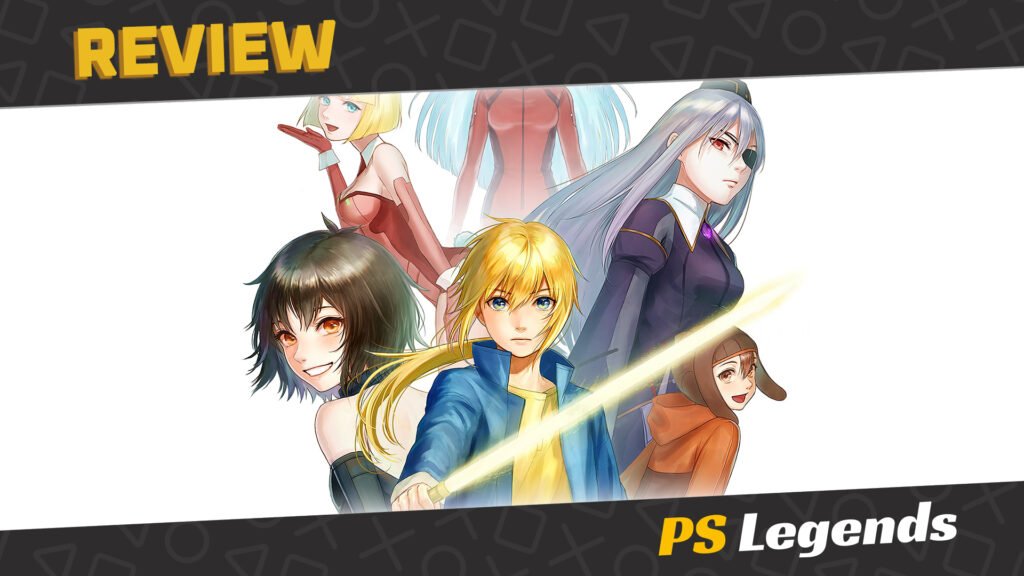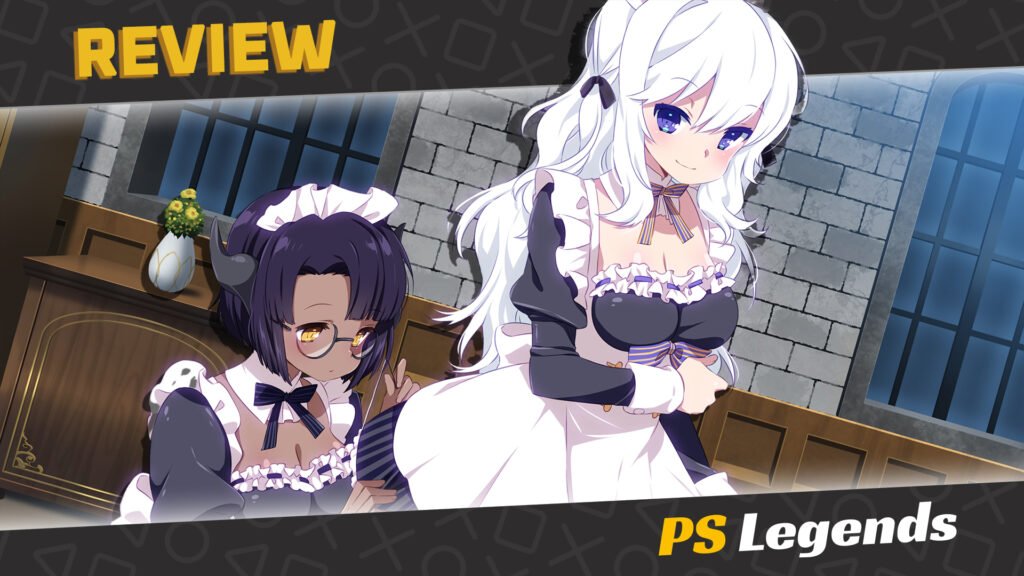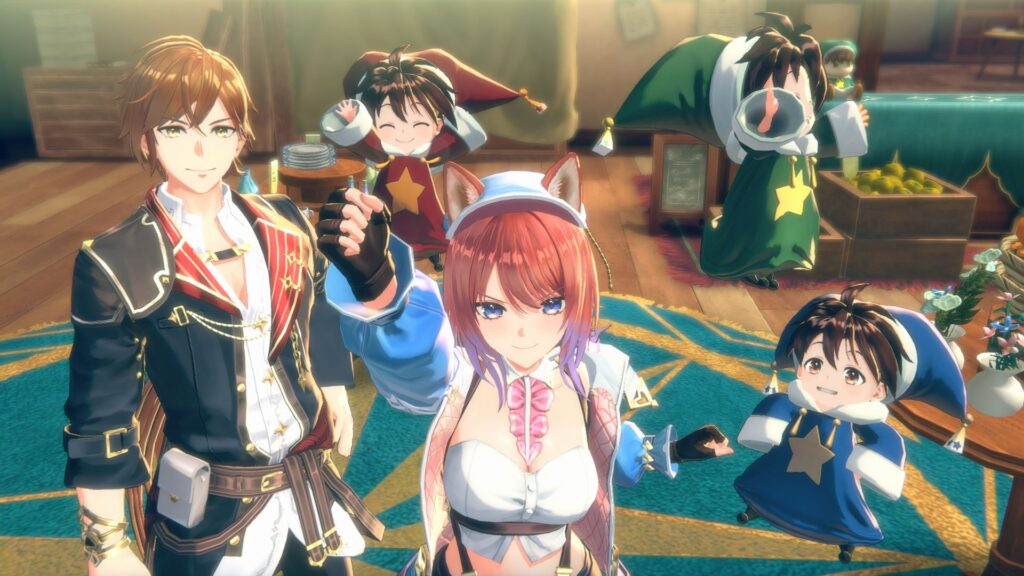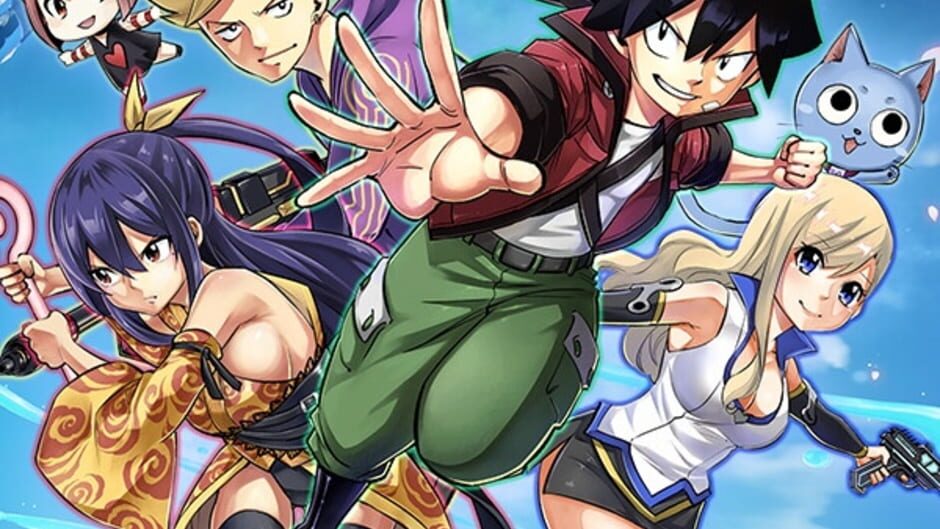Light Fairytale is a hidden gem that I’ve been keeping to myself. While there’s not a whole lot of game to cover, there is a hefty bit of background. In many ways, the Light Fairytale series could be considered one of the most ambitious projects to ever grace our consoles, but to get into why this is, we need to go back in time to 1997, and the game’s influential inspiration.
On This Page
Introduction
When the grand open worlds and fiddly combat mechanics of popular modern sandbox titles aren’t absorbing us into their respective stories the way that they used to, current mainstream games can feel somewhat overwhelming. At moments like this, I like to go back to a point in time where I changed from playing quick bursts of Arcade-style games back in the days of the Amiga, to being pulled into beautiful, immersive worlds worthy of my ever-diminishing time. This was the discovery of early 3D JRPGs in the late 90s, a time when Grandia, Xenogears and The Legend of Dragoon blew everything else out of the water.
Yet, even these titans would be crushed by the absolute legend that was Final Fantasy VII, a game still labelled by many as the greatest game ever, and with very good reason. If you’re a fan, you’ll be happy to learn that Neko.Works’ episodic JRPG, Light Fairytale, is based on Final Fantasy VII, with elements such as its militaristic Empire taken from Final Fantasy VI and its deep underground setting borrowed from Breath of Fire: Dragon Quarter. It’s a retro-RPG fan’s dream.
I believe that it’s Final Fantasy VII’s world that sets it apart from other JRPGs, and the atmosphere that each location brings to the player. The slums feel gritty yet are warmed by the spirit of the community within. It’s a feeling that the game’s remake simply couldn’t replicate by making the environments bigger yet more densely populated. The remake made you feel lost within its towns and crowds rather than being a welcome asset to them.
The simpler styles of games such as the incredible Ar Tonelico Qoga, Tales of Symphonia and Shadow Hearts I find far more endearing. Light Fairytale brings this feeling back. The people are few and those you do meet in this industrial world will earn a place in your heart. It’s a game that’s best enjoyed when it’s savoured. There’s a bit of rivalry going on here too, with Light Fairytale developer Neko.Works hoping to solo-develop four planned episodes of Light Fairytale in the time it takes the mighty Square-Enix to release the three episodes of the Final Fantasy VII Remake saga. It’s brave and ambitious, yet entirely possible. Best of luck, Neko.Works.
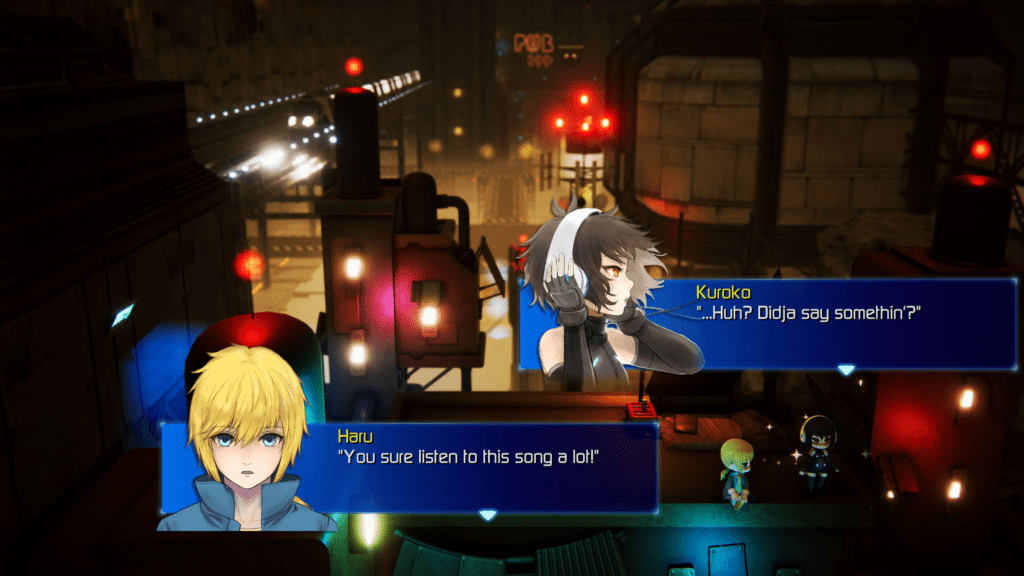
Story
You play as Haru, who with his childhood friend Kuroko (in a relationship reminiscent of Cloud and Tifa) struggle through life as part of the junk-excavating underclass under the oppression of the Empire. Though these slum-dwellers usually do their best to avoid trouble and stay out of the way of the Imperial forces, Haru can’t help but intervene when he finds his friend ‘Kid’ being abused by an Imperial guard.
The two parties soon come to blows and Haru and Kuroko are forced to go on the run through both familiar and Imperial-controlled territory. During their journey, the pair wonder if they will ever see home again, or if they might need to travel far enough that they’ll see the legendary ‘sky’. Adorably, Haru and Kuroko continuously hide their feelings for each other, resulting in some comical banter and mild innuendo when conversing.
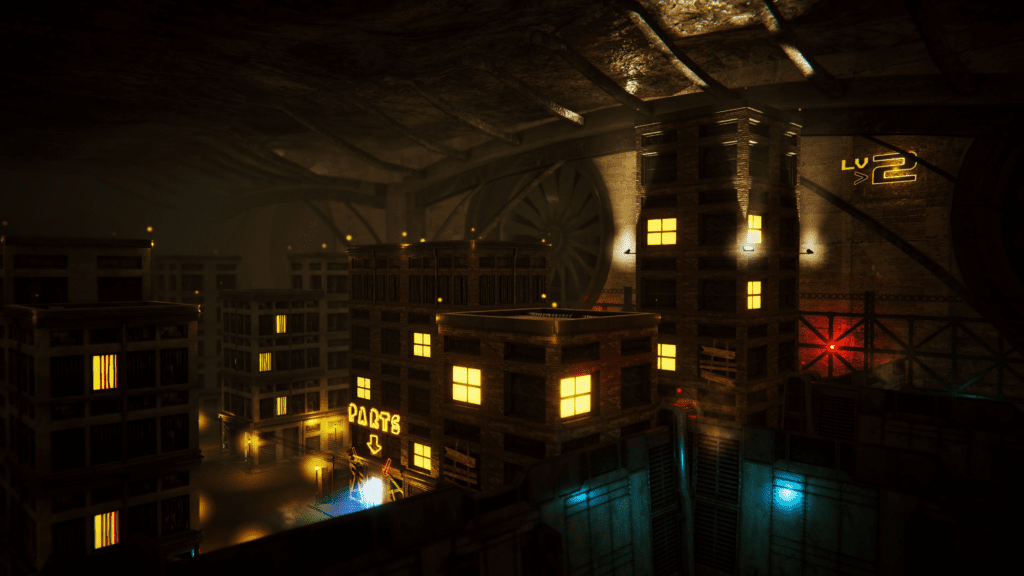
Gameplay
Being an introductory chapter to the saga, Light Fairytale Episode 1 has the bones of a solid turn-based combat engine but there’s not really much opportunity for it to evolve beyond attacking and healing at this point, with many mechanics hinted at but not fully implemented yet. It is certainly fun, but it does feel like a tease for what’s to come. Many will want more content to show what the game can really do.
Random battles are limited in this game. Specific areas are given a percentage of the amount of battles that can occur, which can be viewed through the game’s handy goggles by a simple press of a button. Once that percentage is complete, a star icon replaces it. No more random battles from then on in that area. That said, you are not given the option to flee in any battle.
Unlike Final Fantasy VII, Wild Arms and many other turn-based JRPGs from the 90s era, you don’t go through a battle transition to a new, open battlefield. Instead, the battle takes place immediately there and then on the field map. There’s no loading screen or transitional phase at all.
Episode 1 offers a couple minigames to distract you momentarily. The stealth game becomes available during the game’s story. Players move between objects to avoid being spotted by guards. Points are gained based on speed and timing. Gather enough points and you can win prizes such as equipment or healing items.
Night Rider is an arcade racing game with a top-down, aerial-view. The bike automatically moves, but it’s up to the player to navigate the bike on the path. Going off the path lowers your speed, so stay on the road to grab stars to keep the timer ticking. The longer you stay, the higher your score becomes. Gaining the high score in Night Rider is relatively easy so long as you don’t go off-road more than a handful of times.
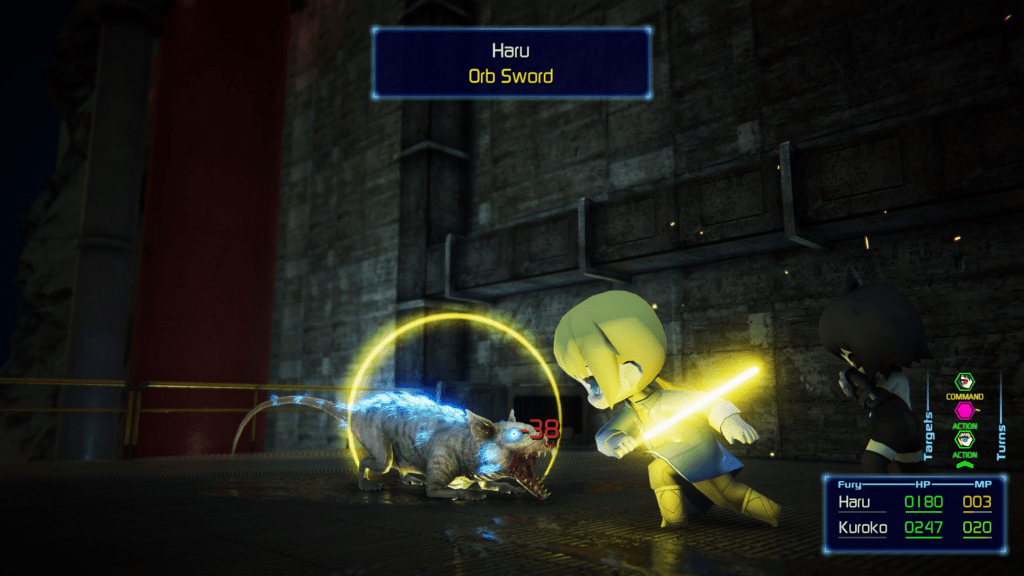
Graphics/Sound
The game’s chibi-style characters are portrayed with a decent amount of detail so they don’t look so out of place on current hardware, though the environments go a step further, bringing superb artificial lighting and applicable textures to this dark, dank, setting.
The location, style, and gameplay are a blend of two classic JRPGs: Wild Arms and Final Fantasy VII. The grungy and dark setting resembles elements of Midgar from Final Fantasy VII, another world with that same edgy feeling. There are different floors of living here; the higher the number, the better your living condition, making for a transitioning, somewhat hierarchical journey.
The game’s soundtrack, though short, feels like it was picked out of the 90s and polished accordingly. The boss battle music feels energetic and has a similar vibe to Final Fantasy VII’s ‘Still More Fighting’. The game also includes some snippets of Japanese voice acting used in battle which fits nicely with the anime-style animation. There’s a solid mixture between upbeat and relaxing tracks that fit each scene well.
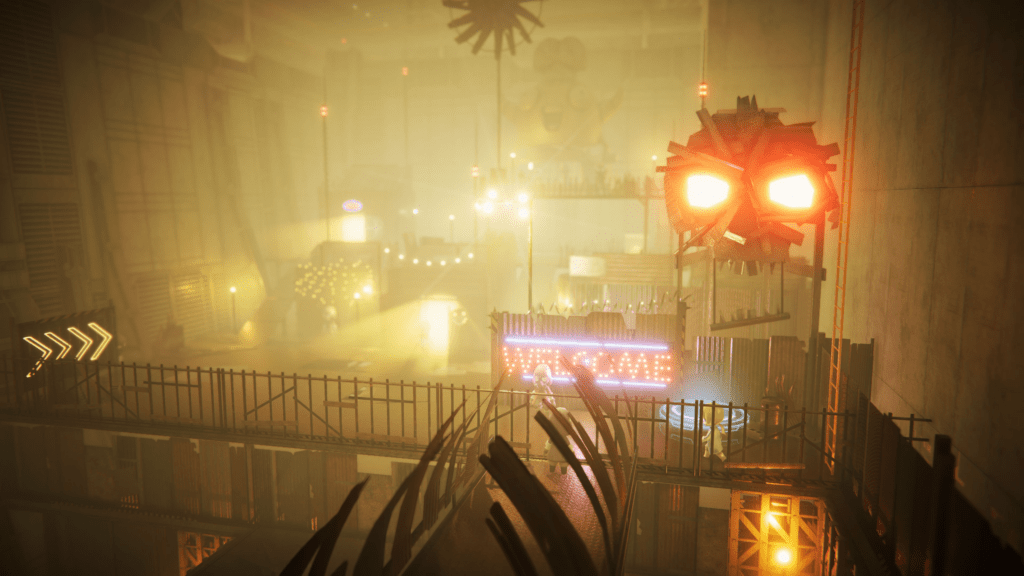
Replayability/Trophies
To fully complete the game and also earn your shiny platinum, you’ll need to play through the game twice. Thankfully, Kuroko takes over as the main character during the second playthrough and most of the sidequests and cutscenes are cut as a result, meaning a reduced playtime of around 2 hours. This is also handy for mopping up any trophies you missed during the first playthrough since most are missable. Use a guide if you’re concerned but most trophies clearly note their requirements.

Conclusion
It’s a short game at 4-5 hours and ends with an abrupt cliffhanger as you might expect for an episodic game, though thankfully Episode 2 is already available. The game’s ending also teases some environments and characters still to come and will certainly leave you hungry for more.
The slum-like setting, the quirky characters and the simple combat are everything an old-school Final Fantasy fan needs. There’s also some wonderful banter going on, such as watching Kuroko explode with rage when witnessing the sexy bunny-costumed Emiko flirting with Haru in the local pub.
Even so, it would be terribly biased to call it a perfect game. There are niggles, such as no hit connection in combat, an early 90s trope which never really worked as your characters look like they’re swinging their swords or fists in the air and hoping for the best. There’s also a lot of emphasis on minigames (another Final Fantasy trope) which you’ll need to master to get the platinum trophy. And, of course, there’s not a whole lot of ground covered here.
In short, Light Fairytale Episode 1 is the prologue for what could be a beautiful JRPG saga. Bring on Episode 2. I just hope the developer doesn’t lose interest in the series and abandons the project. We don’t want a repeat of Penny Arcade. This is the late 90s era classic JRPG that fans like myself have been waiting for.
Joys
- A fun remix of Final Fantasy VII’s ideas
- An exciting story with charming characters
- A return to turn-based combat
Cons
- At around six hours for both scenarios, it’s a very short chapter
- No hit connection in combat looks odd
